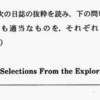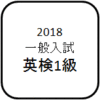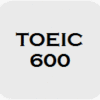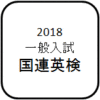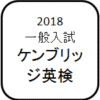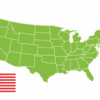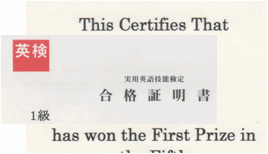2018センター試験英語第6問 問題文和訳(英和交互)&解答解説
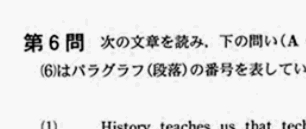
2018年センター試験英語 第6問の問題文和訳と解答解説です。
英文と和訳を一文ずつ交互に並べました。
※管理人Kenが多忙のため、代理の者が代筆しました。後に、Ken本人がチェックします※
第6問・問題文和訳
第6問 次の文章を読み、下の問い(A・B)に答えよ。なお、文章の左にある(1)〜 (6)はパラグラフ(段落)の番号を表している。(配点 36)
(1)
History teaches us that technology and associated discoveries have changed how we understand the world.
歴史は教えています。技術と関連する発見が、私たちがこの世界を理解する方法を変えてきたことを。
Many technological devices provide additional range and power to our natural capacities, such as our five senses.
多くの技術的な道具は、私たちが生まれながらに備えている能力(五感など)に、広範さと強さを付加します。
Among these devices, many enable us to see things that we cannot see with the naked eye.
これらの道具の中には、我々が肉眼では見えないものを見えるようにするものがたくさんあります。
This change from invisible to visible has led to tremendous growth in our comprehension of the world and has strongly influenced our ways of thinking.
この「見えない」から「見える」の変化は、私たちのこの世界についての理解を大きく前進させ、私たちの考え方に強い影響を与えてきました。
(2)
In the 17th century, a scientist noticed that by holding two lenses together in a certain way he could make an object appear larger.
17世紀にある科学者は、2つのレンズをある方法でまとめることによって、対象物をより大きく見せることができることに気づきました。
He used this technique to construct the first simple telescope.
彼はこの技術を使って最初のシンプルな望遠鏡を作りました。
Using these archaic telescopes, early scientists were able to describe the surface of the Moon in detail and to see that Jupiter had at least four such satellites.
これらの古典的な望遠鏡を使って、初期の科学者たちは、月の表面を詳細に記述することができ、木星に少なくとも4つの衛星があることを確認することができました。
Since that time, people have developed various devices that expand our range of sight, thus revealing facts about the universe that lies beyond the Earth.
その時以来、人間はさまざまな道具を開発し、私たちの視界を広げ、これによって、地球の向こうにある宇宙に関する事実を明らかにしてきました。
The telescope continues to offer us new views concerning things beyond our immediate reach.
望遠鏡は、至近距離から遠く離れたものについての新鮮な光景を提供し続けています。
(3)
Later, the microscope was developed using principles similar to the telescope.
後に、顕微鏡が望遠鏡に似たような原則を使って開発されました。
The microscope allows us to study objects we normally cannot see because they are too small.
顕微鏡のお陰で、私たちは、小さすぎるゆえに通常では見ることのできない物体を研究することができます。
Looking through a microscope opened up an entirely new world to scientists.
顕微鏡を通じて、全く新しい世界が科学者の前に広がりました。
Before the invention of the microscope, they couldn’t see the structures of human tissues or cells in plants and animals.
顕微鏡が発明される以前は、人体の組織構造や動植物の細胞を見ることはできませんでした。
These were only visible with the assistance of microscopes.
これらは顕微鏡の助けがあるからこそ見ることができるのです。
Today, electron microscopes allow us to investigate even smaller items, such as molecules.
今日、電子顕微鏡は、分子など、より小さな物質を調べることを可能にしています。
These advances have altered our concepts regarding the composition of things in the world.
これら進歩は、世の物質の構造に関する私たちの概念を変えました。
(4)
The invention of the camera also made the invisible world visible.
カメラの発明によってもまた、目に見えない世界が見えるようになりました。
In the world, everything is changing.
この世のものはすべて変化しています。
Some things change faster than we can see.
私たちの目に見える以上に速く変化するものがあります。
The camera is a tool that gives us the power to freeze change at different points in time.
カメラは、異なった時点での変化を凍結する力を与えてくれる道具です。
Series of pictures have revealed how birds move in flight and athletes run.
連続写真は、鳥が飛行中にどのように動き、アスリートがどのように走るかを明らかにしましました。
The camera can also help us see changes that are so gradual that we usually don’t notice them.
カメラのお陰で、通常気づかない程に緩やかな変化を見てとることもできます。
For example, by comparing photos of the same scene taken months or years apart, we can gain insights into how societies change.
たとえば、同じシーンの写真を数か月間または数年間で比較して、社会の変化の洞察を得ることができます。
There are many other ways besides these in which the camera has changed our perceptions of the world.
これら以外にも、カメラが世界の認識を変えた多くの例があります。
(5)
In the late 19th century, machines that used the newly discovered X-rays revolutionized the way in which we looked at things.
19世紀後半、新たに発見されたX線を使用した機械は、私たちが物を見る方法に革命をもたらしました。
Rather than seeing only the surface of an object, we gained the ability to look into it or through it, bringing the inner elements of many things into our range of view.
対象物の表面だけを見るのではなく、中を覗いたり透かして見ることができて、多くのものの内部要素を視野の中に持ち込むことが可能になりました。
This capability proved practical in the workplace, useful in laboratories and museums, and instructive in universities.
この機能は職場では実用的であり、研究所や博物館では有用であり、大学では有益であることが明らかになりました。
One of the most important applications was in medicine.
最も重要な利用の仕方の1つが医学界にありました。
Doctors often had difficulty diagnosing illnesses or finding problems inside the body.
医師たちは、病気の診断や体内の問題の発見が困難なことがよくありました。
X-rays allowed them to look into their patients, identify where there were problems, and cure them.
X線を使用することで、患者を診察し、問題のある場所を特定し、治療することができるようになりました。
This use of X-rays brought new understandings and methods for diagnosis and treatment.
このようなX線の使用が、診断と治療の場に、新しい理解と方法をもたらしました。
(6)
Different technological devices have made it possible to observe things that we could not see with the naked eye.
異なる技術的な道具によって、肉眼では見えなかったものを観察することが可能になりました。
This has significantly altered our understandings of the world around us.
これは私たちの周りの世界の理解を大きく変えました。
Each technological advance changes us in unpredictable ways, and each discovery increases our knowledge about the world.
それぞれの技術的進歩は予測不可能な方法で私たちを変え、それぞれの発見はこの世界に関する私たちの知識を高めます。
Just as the devices mentioned above have done, new devices will continue to impact our lives and change our ways of thinking in the future.
上記で述べた道具と同様に、新しい道具は今後も引き続き私たちの生活に影響を与え、私たちの考え方を変えることでしょう。
第6問・解答解説
A
次の問い(問1~5)の46〜50に入れるのに最も適当なものを、そ れぞれ下の①〜④のうちから一つずつ選べ。
問1
Which of the following is closest to the meaning of archaic as used in paragraph (2)?(46)
①advanced
②contemporary
③ordinary
④primitive
段落(2)の中で使われている「archaic」の意味に最も近いのは?
(46)正解は④
Using these archaic telescopes, early scientists were able to describe the surface of the Moon in detail and …(該当箇所)
問2
According to paragraph (3), what did people learn by using microscopes?(47)
①Cells were too small to be seen with microscopes.
②Materials were made up of smaller things.
③Molecules were the smallest components.
④Sets of lenses decreased the size of items.
段落(3)によると、人々は、顕微鏡を使って何を知ることができるか?
(47)正解は②
「物質はより小さなもので形成されている」こと。
←Before the invention of the microscope, they couldn’t see the structures of human tissues or cells in plants and animals. These were only visible with the assistance of microscopes.(該当箇所)
①Cells were too small to be seen with microscopes. は「細胞は小さすぎて顕微鏡では見えない」の意味。
問3
According to paragraph (4), what do cameras enable us to do?(48)
①To capture moments in time accurately
②To compare rapid social changes
③To make invisible things move faster
④To predict what will happen
段落(4)によると、カメラは私たちに何を可能にしたか?
(48)正解は①
←The camera is a tool that gives us the power to freeze change at different points in time. Series of pictures have revealed how birds move in flight and athletes run.(該当箇所)
問4
According to paragraph (5), how are X-rays used?(49)
①To find the locations of problems in the body
②To improve visibility of objects’ surfaces
③To learn when paintings were created
④To test the quality of chemical compounds
段落(5)によると、X線はどのように使われるか?
(49)正解は①
「体内の問題個所を見つける」
←X-rays allowed them to look into their patients, identify where there were problems, and cure them.(該当箇所)
問5
What is the main idea of this passage? (50)
①Applications of two lenses can improve people’s sight.
②Development of technology affects our ways of thinking.
③People need to be aware of the dangers of technology.
④Technology plays a vital role in changing our five senses.
この節の主な意図は何か?
(50)正解は②
「技術開発は我々の考え方に影響を与える」
←This change from invisible to visible has led to tremendous growth in our comprehension of the world and has strongly influenced our ways of thinking.(該当箇所)
←Just as the devices mentioned above have done, new devices will continue to impact our lives and change our ways of thinking in the future.(該当箇所)
B
次の表は、本文のパラグラフ(段落)の構成と内容をまとめたものである。51~54に入れるのに最も適当なものを、下の①~④のうちから一つずつ選び、表を完成させよ。ただし、同じものを繰り返し選んではいけない。
| Paragraph | Content |
|---|---|
| (1) | Introduction |
| (2) | (51) |
| (3) | (52) |
| (4) | (53) |
| (5) | (54) |
| (6) | Conclusion |
①Examining the interiors of things
②Exploring the universe of small things
③Looking at instants during a series of changes
④The use of lenses to look out into space
正解(51)④ (52)② (53)③ (54)①
スポンサードリンク

